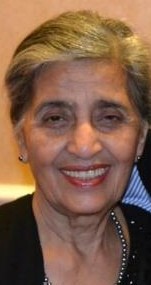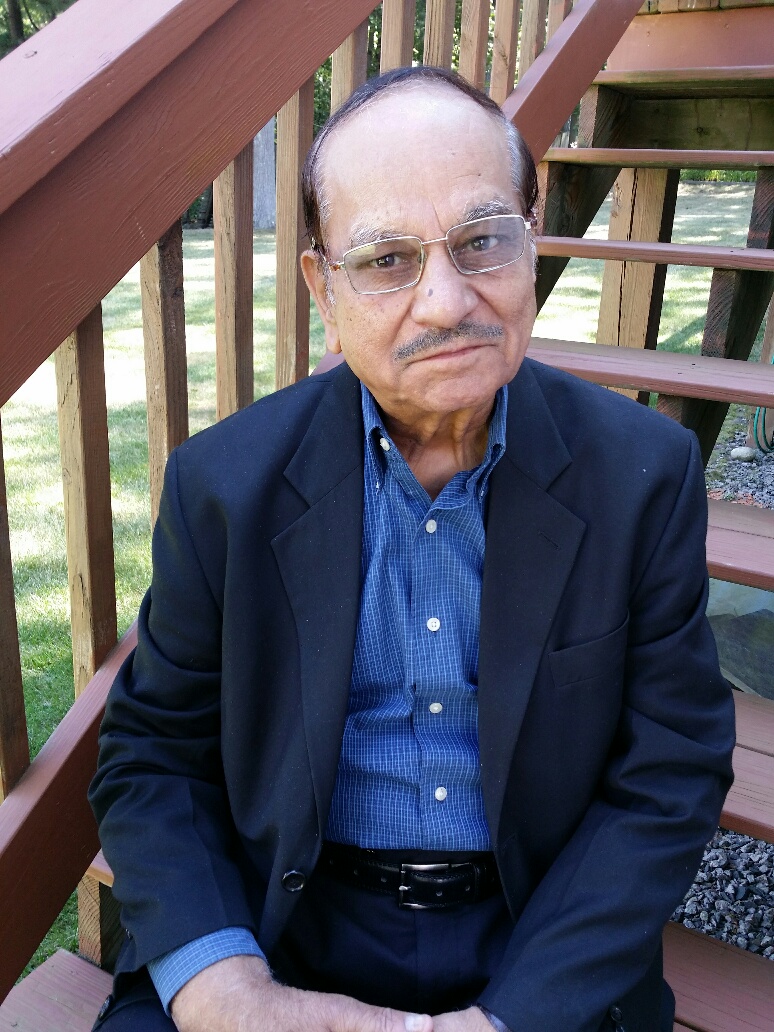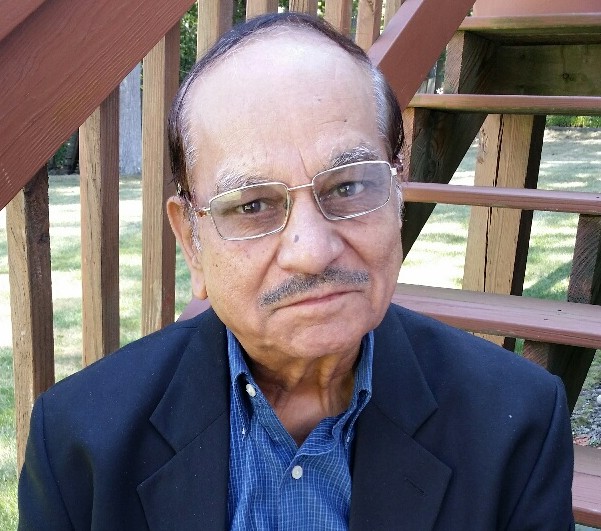By Upendra Mishra
BOSTON—In a nutshell, Ravi Chaturvedi is a living legend when it comes to depth of knowledge and understanding of cricket. “On the bigger canvas, cricket can only become a global sport if cricket becomes part of the Olympic Games,” he predicts.

Cricket has already become 7th most played sports in the world, but Mr. Chaturvedi says that the growth and popularity of cricket have also brought some evils.
“Match fixing, spot fixing and other evils have emerged due to excessive inflow of money in cricket,” says Mr. Chaturvedi. “Cricket administrators are greedy and looking to make money at every conceivable opportunity. Test cricket should be strengthened. Cricket calendar should be more spread out to prevent burning of players by excessive cricket. Over exposure of cricket is making it a kill joy.”
Mr. Chaturvedi became India’s first Hindi cricket commentator after joining All India Radio in 1961. He has covered whopping 116 Cricket Test matches and 220 One-Day Internationals, or ODIs, in cricket. He has written 23 books on cricket, and in 2012 was honored by the Government of India with the prestigious Padma Shri award.
Mr. Chaturvedi, who also served as a professor of zoology at Delhi University for 40 years, was recently in Boston, visiting his college friends Kamlesh Dang and Dr. Yogesh Dayal, MD, who were all classmates at Delhi University.

“Ravi was always deeply interested in cricket. He had a very deep knowledge of this game,” said Ms. Dang, a resident of Lexington, MA. “Ravi had a very good command on Hindi language and became a famous commentator on radio on national and international games of cricket.”
Ms. Dang recalled that Mr. Chaturvedi had all the facts about cricket on his fingertips.
“In October when Ravi and his wife Chander visited us here, we all—Ravi and Chander, Yogesh and his wife Shyama and my husband Puran— had a great time,” Ms. Dang said. “It was so good to talk of old times of Delhi University after so many decades.”
During his Boston visit, Mr. Chaturvedi sat down with INDIA New England News to talk about cricket, which today ranks as one of the top 10 most played sports in the world. The interview with Mr. Chaturvedi also included several rounds of email exchanges with him from New Delhi, where he now lives with his wife.
Here are the excerpts from the interview:
INDIA New England News: You were the first Hindi cricket commentator. How did that happen and how did you get into cricket?
Ravi Chaturvedi: In 1960, Government of India decided to cover all national and international matches involving India in Hindi. As a very technical game, cricket coverage was most challenging and problematic. In 1960 after clearing my audition in English, I went to my sister’s place at Indore where Pakistan was to play Madhya Pradesh where I was asked to do 5-7 minutes summary after each session.
Back in Delhi, Ranji Trophy semi-final between Bombay and Delhi at Feroz Shah Kotla was first experimental 2-hour each session Hindi commentary. After this venture, AIR authorities felt that Hindi cricket commentary was a possibility.
The first Test commentary was at Kanpur in 1960-61 of Ted Dexter’s England team where my fellow commentator was local Ramesh Shrivastav. From there Delhi and Kanpur Tests were regularly covered. From 1974-75 onwards all 5 Tests were covered in Hindi.
From 1978-79, West Indies -India series Doordarshan started covering all Tests and I was first Hindi commentator. Again on foreign TV channels such as World Tel, Star Sports, and ESPN I was first Hindi commentator.

INE: How many test matches and other major matches have you covered?
RC: I covered 116 Tests and 220 ODIs for AIR, Doordarshan, World Tel., Star Sports, ESPN, Trans World International (TWI), Nimbus International Sports, New Zealand TV, Caribbean Broadcasting Corporation and Trinidad TV, Sports programs for the Voice of America and BBC.
INE: How has the face of cricket changed since you started covering in 1961 in terms of gear, rules, umpiring?
RC: There is complete metamorphosis in the face of cricket since 1960s. Helmet, arm and thigh guards, better clothing and shoes. Front foot no-ball rule (prevent dragging), no more than two bouncers per over, restriction on leg side fielders (not more than two behind the batsman); in shorter version-strictness on balls outside leg-stump, power play; Third umpire with all gadgets to give verdict on close decisions. There are three bench judges to give verdict. Umpires have discarded the sacred white coat.

INE: How do you look at the Indian cricket in 2018?
RC: Future of Indian cricket looks bright as presently India is ranked # 1 in Tests; #2 in the ODIs and #3 in the Twenty20is.
The biggest gain of Indian cricket is big pool of players to select the national team for the various formats of the game.
We have 3 openers (Murli Vijay, Shikhar Dhawan, KL Rahul), dependable middle order Cheteshwar Pujara , Virat Kohli, Ajinkya Rahane, Rohit Sharma and lower order of Wriddhiman Saha and Ravichandra Ashwin to contribute some runs as well. Saha is emerging as a top wicket-keeper batsman with Parthiv Patel waiting in the wings.
The most redeeming aspect is battery of fast bowlers Ishant Sharma, Mohammed Shami, Umesh Yadav and Jasprit Bumrah backed by quartet of spinners Ravichandran Ashwin, Ravindra Jadeja and two wrist spinners Yuzvendra Chahal and Kuldeep Yadav.
There are another half-a-dozen talented youngsters waiting to take the place of the seniors. On top of it, the old-war horse Mahendra Singh Dhoni still in his prime. At the moment, Indian team is on the high. But the coming series against South Africa, England and Australian will be the litmus test of Indian teams’ superiority.
INE: With the Indian and the people from other cricket loving countries spreading all over the world, the popularity of cricket is growing slowly but steadily. What do you think of the future of global cricket?
RC: It is a very positive sign that the people from the premier cricketing nations are spread all over the globe, contributing to the spread and growth of cricket where it had no niche.
On the bigger canvas, cricket can only become a global sport if cricket becomes part of the Olympic Games. The problem lies with the ego of the International Cricket Council (ICC) to become subservient to the International Olympic Committee (IOC) and the loss of bounty of purse full money. Lastly to fit Olympic Games in already crowded international cricket calendar seems problematic at the moment.
INE: Which countries have consistently produced best cricket players and why?
RC: Up to Pre-War era, the Australians and English cricketers were prominent. Decades of 1970s and 1980s belonged to West Indies. Late 1980s and early 1990s it was India and Pakistan occupying the pedestal position.
Australia came back on the center stage of cricket from late 1990s with Sri Lanka chipping in briefly. Early part of the present century was dominated by Australia with India taking over later. At the moment top cricketing nations are Australia, India and South Africa.
INE: Was it a good idea to introduce one-day cricket and how and why?
RC: Shattered Post-War European economy was doled out by Marshall Plan. Edifice of cricket was crumbling with empty grounds; coffers of the club were empty. HS Altham (one time MCC President) committee suggested a shorter version of cricket. Kerry Packer, the Australian TV tycoon’s innovation of night cricket opened up a new avenue of entertainment.
ODI has led to innovation of new strokes, improvement in running between wickets and fielding has become important cob web of instant cricket. But it is important to keep a balance between Test, ODI and Twenty20 formats of the game.
Twenty20 is rock music, ODI is Bollywood music while Test cricket is classical music, it touches your heart. Test cricket is mother of the game, you don’t disown the mother.
INE: How have the players, or rather attitudes of players changed?
RC: Earlier players played the game to enjoy themselves and entertain the spectators. Once a decision was given player would walk, not now, cast aspersion on the umpire. Bowlers and fielders howl and run towards the umpire to pressurize him to give decision in their favor. It is nothing short of terrorism in cricket.
It was a pride to play for your country. Now they are mostly busy with more lucrative Premier Leagues.
INE: It seems money has changed the face of cricket. What do you think of money and cricket?
RC: Baap bada na bhaya, sabse bada rupaiya. ICC and Boards are milking the cow at each available opportunity. Cricket has become a goose who lays golden egg. Match fixing, spot fixing and other evils have emerged due to excessive inflow of money in cricket.
INE: What are the changes you don’t like in the cricket world today and why?
RC: Cricket administrators are greedy and looking to make money at every conceivable opportunity.
Test cricket should be strengthened. Cricket calendar should be more spread out to prevent burning of players by excessive cricket. Over exposure of cricket is making it a kill joy.
INE: You favorite Indian and overall international batmen and why? I mean all-time favorite?
RC: Don Bradman is all-time great batsman but my childhood idol was artistic and stylish Vijay Merchant. He was a meticulous and methodical batsman like Sunil Gavaskar but his late cut was executed in most exquisite manner.
Sir Neville Cardus wrote, “Merchant is in method India’s good European.” I have special admiration for Sunil Gavaskar for creating records against most furious bowlers in World cricket plus two great spinners Lance Gibbs and Derek Underwood around.
INE: Favorite bowlers from the past and today as well?
RC: Ray Lindwall of Australia of yester years. Mohammad Shami has something extra in his bowling armory to make him dangerous.
INE: Your favorite fielders?
RC: Eknath Solkar and Jonty Rhodes of South Africa.
INE: Also, who are your favorite wicket keepers?
RC: Godfrey Evans of England. Farokh Engineer for his flamboyancy and Syed Kirmani for his proficiency.
INE: And of course your all time spinners?
RC: Bishan Singh Bedi’s bowling was poetry in geometry and Shubash Gupte (Gary Sobers ranks him very high).














